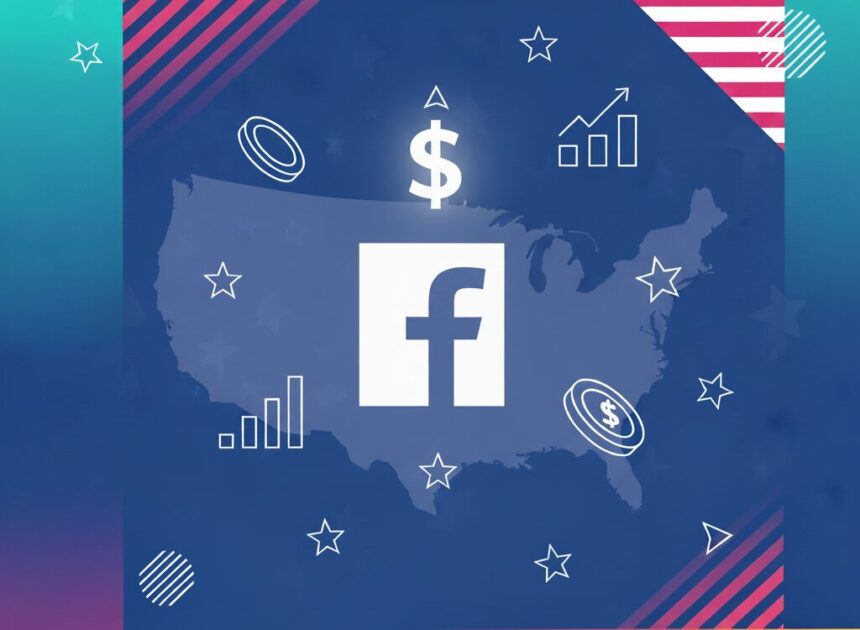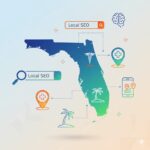Planning your digital marketing budget but feeling lost in the dark about what to expect from Meta? You’re not alone. For countless businesses, understanding the real Facebook advertising cost in the USA is the critical first step toward launching a successful and, more importantly, profitable campaign. Without a clear picture of potential expenses, you’re essentially flying blind.
This guide is here to turn on the lights. We’ll provide the latest projected benchmarks for June 2025, break down the key factors that influence your spending, and explore the strategies you can use to control your budget. By the end, you’ll have a clear framework for estimating and optimizing your Facebook ads cost.
The Latest Facebook Ad Cost Benchmarks (June 2025)
While ad costs can fluctuate daily, having up-to-date benchmarks gives you a realistic starting point. Based on current trends and data analysis, here’s what we project for the U.S. market in mid-2025.
Average Cost Per Click (CPC): A Look at the Facebook CPC USA
The projected average Cost Per Click (CPC) in the USA for June 2025 is $0.70.
So, what does this mean? CPC is the amount you pay each time someone clicks on your ad. This pricing model is most relevant for campaigns where the primary goal is to drive traffic to a website, landing page, or online store. If your objective is set to Traffic, Conversions, or Catalog Sales, you’ll be watching your CPC very closely. A lower CPC means you’re getting more clicks for your budget, increasing the potential for leads and sales.
Average Cost Per Mille (CPM): The Price for 1,000 Impressions
The projected average Cost Per Mille (CPM) in the USA for June 2025 is $12.74.
CPM, which stands for Cost Per 1,000 Impressions, is the price you pay for your ad to be shown one thousand times. It doesn’t matter if users click, like, or ignore it; you pay for the visibility. This metric is the cornerstone of campaigns focused on Brand Awareness or Reach. If your goal is to get your brand name and message in front of as many relevant people as possible, CPM is the key indicator of your Facebook CPM USA efficiency.
Key Factors That Determine Your Final Facebook Ads Cost
Your final invoice from Meta is rarely just the average CPC or CPM. The actual Facebook ads cost you pay is a dynamic figure influenced by several powerful factors.
Your Target Audience and Competition
Who you’re trying to reach matters—a lot. Targeting a broad audience, like “women in the USA aged 25-45,” is generally less expensive than targeting a highly specific, high-value niche, such as “CEOs in the tech industry in San Francisco.” The more advertisers competing to reach the same audience, the higher the cost will be.
Ad Quality and Relevance Score
Meta rewards advertisers who create a positive user experience. The platform’s algorithm analyzes your ads for quality and relevance, which is measured through three key diagnostics:
- Quality Ranking: How your ad’s perceived quality compares to ads competing for the same audience.
- Engagement Rate Ranking: How your ad’s expected engagement rate compares to others.
- Conversion Rate Ranking: How your ad’s expected conversion rate compares to ads with the same optimization goal.
High-quality, engaging ads are rewarded with better placement and lower costs, while low-quality ads get penalized with reduced reach and higher expenses.
Seasonal Impacts and Major Events
Advertising costs are not static throughout the year. They often surge during peak commercial seasons. The most significant spike happens in Q4, particularly around Black Friday, Cyber Monday, and the Christmas holidays, when competition is at its fiercest. Expect to pay a premium to reach users during these high-stakes periods.
Campaign Objective
The goal you select when setting up your campaign directly impacts the Facebook ad pricing model.
- An objective like Reach or Brand Awareness is typically cheaper because Meta is simply optimizing to show your ad to as many people as possible.
- An objective like Conversions or Lead Generation is usually more expensive. Here, you’re asking the algorithm to find users within your target audience who are not just likely to see your ad, but also to take a specific, valuable action like making a purchase or filling out a form.
Ad Placement
Where your ad appears also affects its cost. Meta offers a variety of placements across its family of apps, and costs can differ significantly between them.
- Facebook and Instagram Feeds are often the most competitive (and thus expensive) placements.
- Instagram Stories and Reels can offer high engagement at a potentially different cost.
- The Audience Network (which places your ads on third-party apps and websites) can sometimes offer a lower cost but may have varying quality.
Understanding Facebook Ad Pricing: Bidding Strategies Explained
You have more control over your Facebook ads cost than you might think. Your chosen bidding strategy tells Meta how to spend your money in the ad auction to get you the best possible results.
Highest Volume (Lowest Cost) Bidding
This is the default and simplest bidding strategy. You set a budget, and Meta’s system works to get you the most possible results (like clicks or conversions) for that budget. It’s ideal for advertisers who want to spend their entire budget and maximize their campaign’s output without setting specific cost-per-action limits.
Cost Per Result Goal (Cost Cap)
With this strategy, you tell Meta the average cost per result you want to stay around. For example, you might set a cost per purchase goal of $20. Meta will then bid to get you conversions at or around that $20 average. Your daily costs might fluctuate above or below this number, but it helps keep your average in check.
Bid Cap
A Bid Cap is a more hands-on approach where you set the maximum amount you are willing to bid in any single ad auction. This strategy gives you granular control over your bids but can be restrictive. If your bid cap is too low, you may struggle to win auctions and get your ad shown, limiting your campaign’s delivery.
Return on Ad Spend (ROAS) Goal
Perfect for e-commerce and direct-response advertisers, the ROAS Goal strategy lets you bid for a specific return on your ad spend. For instance, you can tell Meta you want to achieve at least a 3x return ($3 in revenue for every $1 spent on ads). The algorithm will then prioritize showing your ads to people most likely to make a high-value purchase to help you meet that goal.
How to Optimize Your Budget and Lower Ad Costs
Knowing the benchmarks and factors is one thing; actively lowering your costs is another. Here are four proven strategies to optimize your budget.
- A/B Testing Your Creatives and Audiences
Continuously test different ad elements to see what resonates most with your audience. Test images or videos, ad copy, headlines, and calls-to-action. Similarly, test different audience segments to find which ones deliver the best results at the lowest cost. - Leveraging Retargeting Campaigns for Warmer Audiences
It’s almost always cheaper and more effective to advertise to people who have already interacted with your brand. Retarget past website visitors, people who have engaged with your posts, or existing email subscribers. These warm audiences are more likely to convert, lowering your cost per result. - Monitoring Ad Frequency to Avoid Audience Fatigue
Ad Frequency is the average number of times a person has seen your ad. If this number gets too high (e.g., above 5-7 in a short period), your audience may experience ad fatigue. This leads to lower engagement and higher costs. Refresh creatives or pause campaigns if needed. - Starting with a Clear Budget and Realistic Goals
Before spending a dollar, define success for your campaign. Set a clear daily or lifetime budget you’re comfortable with and establish realistic KPIs. This clarity helps you make smarter decisions and avoid overspending while testing and learning.
Conclusion: Making Sense of Facebook Advertising Cost in the USA
Navigating the world of Facebook ad pricing can feel complex, but it doesn’t have to be. By understanding the latest benchmarks—like a projected CPC of $0.70 and a CPM of $12.74 for June 2025—you have a solid foundation for your planning.
Remember, the final Facebook advertising cost in the USA is not a fixed price. It’s a dynamic number that you can influence through smart targeting, high-quality creative, strategic bidding, and continuous optimization.
The best way to truly understand your potential costs is to get started. Use the data and strategies in this guide to set an informed budget, launch your first campaign, and begin testing. The insights you gain will be the most valuable asset in building a profitable advertising machine.







